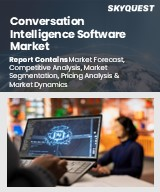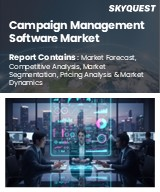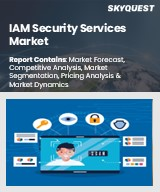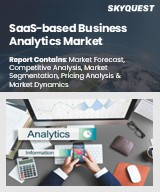
|
시장보고서
상품코드
1725135
세계의 SaaS(Software as a Service) 시장 예측(-2032년) : 컴퍼넌트별, 전개 형태별, 조직 규모별, 용도별, 최종 사용자별, 지역별 분석Software as a Service (SaaS) Market Forecasts to 2032 - Global Analysis By Component (Software and Services), Deployment Mode, Organization Size, Application, End User and By Geography |
||||||
Stratistics MRC에 따르면 세계의 SaaS(Software as a Service) 시장은 2025년 3,120억 3,000만 달러를 차지하고, 2032년까지 연평균 복합 성장률(CAGR) 20.8%로 성장해 1조 1,712억 달러에 달할 것으로 예측되고 있습니다.
SaaS(Software as a Service)는 클라우드 기반 소프트웨어 제공 모델로, 용도는 서비스 제공업체에 의해 호스팅되며, 사용자는 인터넷을 통해 액세스할 수 있습니다. SaaS는 일반적으로 고객 관계 관리(CRM), 이메일, 협업 도구, 기업 자원 계획(ERP) 등 다양한 비즈니스 용도에 활용됩니다.
업계 전문가에 따르면 2023년에는 73%의 조직이 SaaS 용도를 이용하고 있다고 합니다.
원격 액세스 및 유연성
원격 액세스와 유연성은 SaaS(Software as a Service) 시장 성장을 크게 뒷받침합니다. 사용자가 언제 어디서나 소프트웨어에 액세스할 수 있도록 함으로써 SaaS 솔루션은 지리적으로 분산된 팀의 생산성과 협업을 강화합니다. 기업은 변화하는 요구에 적응하는 확장 가능한 솔루션의 혜택을 누리며 최종 사용자는 원활한 경험을 누릴 수 있습니다.
데이터 보안 및 개인 정보 보호에 대한 우려
데이터 유출 가능성 및 GDPR(EU 개인정보보호규정)과 같은 법률을 준수하지 않기 때문에 기업은 클라우드 솔루션을 사용하기에 꺼려하기 때문에 데이터 보안 및 개인 정보 보호 문제가 SaaS(Software as a Service) 시장 확대를 늦추고 있습니다. 기업은 고객의 신뢰를 잃고 중요한 데이터에 무단으로 액세스할 수 있다는 우려가 있습니다.
클라우드 채용 확대
클라우드 컴퓨팅 채택 확대는 모든 규모의 기업에 확장 가능하고 비용 효율적이며 접근하기 쉬운 솔루션을 제공함으로써 SaaS(Software as a Service) 시장을 크게 견인하고 있습니다. 클라우드 인프라스트럭처는 신속한 배포, 원활한 업데이트, 원격 액세스를 가능하게 하고, 유연성과 협업을 강화합니다. 기업의 디지털 업무나 원격근무로 전환이 진행되는 중 CRM, 인사, 생산성 향상 등의 SaaS 용도에 대한 수요는 계속 급증하고 있습니다.
규정 준수 및 규제 문제
컴플라이언스 및 규제 문제는 특히 까다로운 산업에서 진입 장벽이 되고 SaaS(Software as a Service) 시장에 큰 과제를 가져다줍니다. SaaS 공급자는 복잡한 데이터 프라이버시 법률, 보안 규제, 업계 특유의 컴플라이언스 기준을 뛰어넘어야 하기 때문에 운영 비용 증가나 제품 전개의 지연으로 이어질 가능성이 있습니다.
COVID-19의 영향
COVID-19의 유행은 기업이 원격 워크나 클라우드 기반 솔루션으로 이동했기 때문에 SaaS(Software as a Service) 시장 성장을 가속화했습니다. SaaS 제공업체는 협업 도구, 사이버 보안 및 고객 관계 관리 소프트웨어에 대한 수요의 급증을 경험했습니다.
예측기간 동안 인적 자본 관리(HCM) 분야가 최대가 될 전망
인적 자본 관리(HCM) 부문은 예측 기간 동안 가장 큰 시장 점유율을 차지할 것으로 예측됩니다. 원격지의 종업원을 관리하고 컴플라이언스를 확보하기 위해 이러한 툴을 채용하는 기업이 늘어나고 있으며, SaaS 시장의 확대를 뒷받침하고 있습니다.
예측 기간 동안 건강 관리 분야의 CAGR이 가장 높아질 전망
원격 의료, 전자 의료 기록(EHR) 및 원격 환자 모니터링에 대한 수요가 증가하고 건강 관리 제공업체가 클라우드 기반 SaaS 솔루션을 채택하기 때문에 이러한 플랫폼은 데이터에 대한 액세스를 제공합니다.
최대 점유율을 차지하는 지역:
예측 기간 동안 아시아태평양이 가장 큰 시장 점유율을 차지할 것으로 예측됩니다. 이는 인터넷 보급과 클라우드 배포가 진행되고 있기 때문에 SaaS 솔루션은 신흥 기업과 기업 모두에게 유연하고 비용 효율적인 도구를 제공합니다. 정부와 산업계가 디지털 에코시스템을 도입하는 동안 SaaS는 지역의 경쟁력, 경제 성장, 다양한 섹터에 걸친 기술 주도의 개발을 추진하는데 중요한 역할을 하고 있습니다.
CAGR이 가장 높은 지역:
예측 기간 동안 북미는 접근성이 뛰어난 클라우드 기반 솔루션을 통해 가장 높은 CAGR을 제공할 것으로 예측됩니다. SaaS는 신흥 기업과 대기업에 관계없이 IT 오버헤드를 줄이면서 핵심 업무에 집중할 수 있도록 합니다.
무료 주문을 받아서 만드는 서비스:
이 보고서를 구독하는 고객은 다음 무료 맞춤설정 옵션 중 하나를 사용할 수 있습니다.
- 기업 프로파일
- 추가 시장 기업의 종합적 프로파일링(3개사까지)
- 주요 기업의 SWOT 분석(3개사까지)
- 지역 세분화
- 고객의 관심에 응한 주요국 시장 추계 및 예측, CAGR(주: 타당성 확인에 따름)
- 경쟁 벤치마킹
- 제품 포트폴리오, 지리적 존재, 전략적 제휴에 기반한 주요 기업 벤치마킹
목차
제1장 주요 요약
제2장 서문
- 개요
- 이해관계자
- 조사 범위
- 조사 방법
- 데이터 마이닝
- 데이터 분석
- 데이터 검증
- 조사 접근
- 조사 자료
- 1차 조사 자료
- 2차 조사 정보원
- 전제조건
제3장 시장 동향 분석
- 성장 촉진요인
- 억제요인
- 기회
- 위협
- 용도 분석
- 최종 사용자 분석
- 신흥 시장
- COVID-19의 영향
제4장 Porter's Five Forces 분석
- 공급기업의 협상력
- 구매자의 협상력
- 대체품의 위협
- 신규 참가업체의 위협
- 경쟁 기업간 경쟁 관계
제5장 세계의 SaaS 시장 : 컴포넌트별
- 소프트웨어
- 서비스
제6장 세계의 SaaS 시장 : 전개 형태별
- 퍼블릭 클라우드
- 프라이빗 클라우드
- 하이브리드 클라우드
제7장 세계의 SaaS 시장 : 조직 규모별
- 중소기업
- 대기업
제8장 세계의 SaaS 시장 : 용도별
- 고객관계관리(CRM)
- 전사적 자원 계획(ERP)
- 인재관리(HCM)
- 공급망 관리(SCM)
- 비즈니스 인텔리전스(BI)
- 컨텐츠 관리 시스템(CMS)
- 협업과 커뮤니케이션
- 기타 용도
제9장 세계의 SaaS 시장 : 최종 사용자별
- 은행, 금융서비스 및 보험(BFSI)
- IT 및 통신
- 헬스케어
- 소매업 및 전자상거래
- 교육
- 제조업
- 정부
- 미디어 및 엔터테인먼트
- 기타 최종 사용자
제10장 세계의 SaaS 시장 : 지역별
- 북미
- 미국
- 캐나다
- 멕시코
- 유럽
- 독일
- 영국
- 이탈리아
- 프랑스
- 스페인
- 기타 유럽
- 아시아태평양
- 일본
- 중국
- 인도
- 호주
- 뉴질랜드
- 한국
- 기타 아시아태평양
- 남미
- 아르헨티나
- 브라질
- 칠레
- 기타 남미
- 중동 및 아프리카
- 사우디아라비아
- 아랍에미리트(UAE)
- 카타르
- 남아프리카
- 기타 중동 및 아프리카
제11장 주요 발전
- 계약, 파트너십, 협업, 합작투자
- 인수와 합병
- 신제품 발매
- 사업 확대
- 기타 주요 전략
제12장 기업 프로파일링
- Salesforce
- Adobe
- Microsoft
- Oracle
- SAP
- ServiceNow
- Workday
- Atlassian
- Shopify
- Zoom Video Communications
- DocuSign
- HubSpot
- Intuit
- Dropbox
- Snowflake
- Datadog
- Twilio
- Freshworks
According to Stratistics MRC, the Global Software as a Service (SaaS) Market is accounted for $312.03 billion in 2025 and is expected to reach $1171.2 billion by 2032 growing at a CAGR of 20.8% during the forecast period. Software as a Service (SaaS) is a cloud-based software delivery model where applications are hosted by a service provider and accessed by users over the internet. Instead of purchasing and installing software on individual computers, users subscribe to SaaS solutions on a pay-as-you-go basis. This model allows for automatic updates, easy scalability, and reduced IT infrastructure costs. SaaS is commonly used for a variety of business applications, including customer relationship management (CRM), email, collaboration tools, and enterprise resource planning (ERP). It offers flexibility, accessibility from any internet-connected device, and streamlined operations, making it a popular choice for organizations of all sizes.
According to industry experts, in 2023, 73% organizations used SaaS applications.
Market Dynamics:
Driver:
Remote Access & Flexibility
Remote access and flexibility have significantly propelled the growth of the Software as a Service (SaaS) market. By enabling users to access software anytime, anywhere, SaaS solutions enhance productivity and collaboration across geographically dispersed teams. This flexibility supports remote work trends, reduces infrastructure costs, and simplifies software management. Businesses benefit from scalable solutions that adapt to changing needs, while end-users enjoy seamless experiences. As a result, SaaS adoption continues to accelerate across industries, driving innovation and operational efficiency globally.
Restraint:
Data Security & Privacy Concerns
Concerns about data security and privacy have slowed the Software as a Service (SaaS) market's expansion as companies are reluctant to use cloud solutions because of the possibility of data breaches and non-compliance with laws like the GDPR. Businesses worry about losing the trust of their customers and unlawful access to important data. These worries have limited the adoption of SaaS in some industries by delaying investments and raising the need for strong security measures.
Opportunity:
Growing Cloud Adoption
The growing adoption of cloud computing is significantly driving the Software as a Service (SaaS) market by offering scalable, cost-effective, and accessible solutions to businesses of all sizes. Cloud infrastructure enables rapid deployment, seamless updates, and remote access, enhancing flexibility and collaboration. As organizations increasingly shift to digital operations and remote work, demand for SaaS applications in CRM, HR, and productivity continues to surge. This shift fosters innovation, accelerates time-to-market, and empowers businesses to remain competitive in a fast-evolving digital landscape.
Threat:
Compliance and Regulatory Issues
Compliance and regulatory issues pose significant challenges for the Software as a Service (SaaS) market by creating barriers to entry, especially in highly regulated industries. SaaS providers must navigate complex data privacy laws, security regulations, and industry-specific compliance standards, which can lead to increased operational costs and delays in product deployment. Non-compliance risks also result in penalties, reputational damage, and customer trust issues, hindering market growth and adoption.
Covid-19 Impact
The COVID-19 pandemic accelerated the growth of the Software as a Service (SaaS) market as businesses shifted to remote work and cloud-based solutions. SaaS providers experienced a surge in demand for collaboration tools, cybersecurity, and customer relationship management software. The increased reliance on digital platforms for business continuity, along with cost-effective scalability, solidified SaaS as a critical component of corporate infrastructure during and post-pandemic.
The human capital management (HCM) segment is expected to be the largest during the forecast period
The human capital management (HCM) segment is expected to account for the largest market share during the forecast period, because HCM solutions enhance workforce efficiency, talent acquisition, and employee engagement, fueling demand for scalable and flexible SaaS offerings. Organizations increasingly adopt these tools to manage remote workforces and ensure compliance, boosting SaaS market expansion. The integration of AI and analytics in HCM further enhances decision-making, solidifying its positive and transformative impact on the SaaS landscape.
The healthcare segment is expected to have the highest CAGR during the forecast period
Over the forecast period, the healthcare segment is predicted to witness the highest growth rate, due to rising demand for telemedicine, electronic health records (EHRs), and remote patient monitoring is pushing healthcare providers to adopt cloud-based SaaS solutions. These platforms enhance data accessibility, improve patient outcomes, and ensure regulatory compliance. As the need for scalable, secure, and cost-effective IT infrastructure increases, the healthcare industry continues to positively influence SaaS market expansion.
Region with largest share:
During the forecast period, the Asia Pacific region is expected to hold the largest market share due to growing internet penetration and cloud adoption, SaaS solutions empower startups and enterprises alike with flexible, cost-effective tools. This shift fosters innovation, enhances productivity, and supports remote collaboration. As governments and industries embrace digital ecosystems, SaaS is playing a key role in boosting regional competitiveness, economic growth, and technology-driven development across diverse sectors.
Region with highest CAGR:
Over the forecast period, the North America region is anticipated to exhibit the highest CAGR, owing to accessible cloud-based solutions. Businesses benefit from enhanced flexibility, real-time collaboration, and faster deployment times, leading to increased efficiency and innovation. SaaS empowers startups and enterprises alike to focus on core operations while reducing IT overhead. Its positive impact is evident in sectors like healthcare, finance, and education, where it enhances productivity, data management, and customer engagement across the region.
Key players in the market
Some of the key players profiled in the Software as a Service (SaaS) Market include Salesforce, Adobe, Microsoft, Oracle, SAP, ServiceNow, Workday, Atlassian, Shopify, Zoom Video Communications, DocuSign, HubSpot, Intuit, Dropbox, Snowflake, Datadog, Twilio and Freshworks.
Key Developments:
In February 2025, Microsoft and Anduril Industries announced an expanded partnership to advance the U.S. Army's Integrated Visual Augmentation System (IVAS) program. Additionally, Microsoft Azure will serve as Anduril's preferred cloud platform for all IVAS and Anduril AI technologies.
In January 2025, In January 2025, Microsoft and OpenAI announced an evolution of their strategic partnership, focusing on the next phase of AI development. Key elements of their 2019 agreement remain intact through 2030, including Microsoft's rights to OpenAI's intellectual property for integration into products like Copilot, exclusivity of the OpenAI API on Azure, and mutual revenue-sharing arrangements.
In June 2024, Hitachi and Microsoft announced a significant three-year strategic partnership aimed at accelerating business and social innovation through generative AI. This collaboration is projected to be worth several billion dollars and focuses on leveraging AI technologies to drive transformation across various industries.
Components Covered:
- Software
- Services
Deployment Models Covered:
- Public Cloud
- Private Cloud
- Hybrid Cloud
Organization Sizes Covered:
- Small and Medium Enterprises (SMEs)
- Large Enterprises
Applications Covered:
- Customer Relationship Management (CRM)
- Enterprise Resource Planning (ERP)
- Human Capital Management (HCM)
- Supply Chain Management (SCM)
- Business Intelligence (BI)
- Content Management Systems (CMS)
- Collaboration and Communication
- Others Applications
End Users Covered:
- Banking, Financial Services, and Insurance (BFSI)
- IT and Telecom
- Healthcare
- Retail and E-commerce
- Education
- Manufacturing
- Government
- Media and Entertainment
- Other End Users
Regions Covered:
- North America
- US
- Canada
- Mexico
- Europe
- Germany
- UK
- Italy
- France
- Spain
- Rest of Europe
- Asia Pacific
- Japan
- China
- India
- Australia
- New Zealand
- South Korea
- Rest of Asia Pacific
- South America
- Argentina
- Brazil
- Chile
- Rest of South America
- Middle East & Africa
- Saudi Arabia
- UAE
- Qatar
- South Africa
- Rest of Middle East & Africa
What our report offers:
- Market share assessments for the regional and country-level segments
- Strategic recommendations for the new entrants
- Covers Market data for the years 2022, 2023, 2024, 2026, and 2030
- Market Trends (Drivers, Constraints, Opportunities, Threats, Challenges, Investment Opportunities, and recommendations)
- Strategic recommendations in key business segments based on the market estimations
- Competitive landscaping mapping the key common trends
- Company profiling with detailed strategies, financials, and recent developments
- Supply chain trends mapping the latest technological advancements
Free Customization Offerings:
All the customers of this report will be entitled to receive one of the following free customization options:
- Company Profiling
- Comprehensive profiling of additional market players (up to 3)
- SWOT Analysis of key players (up to 3)
- Regional Segmentation
- Market estimations, Forecasts and CAGR of any prominent country as per the client's interest (Note: Depends on feasibility check)
- Competitive Benchmarking
- Benchmarking of key players based on product portfolio, geographical presence, and strategic alliances
Table of Contents
1 Executive Summary
2 Preface
- 2.1 Abstract
- 2.2 Stake Holders
- 2.3 Research Scope
- 2.4 Research Methodology
- 2.4.1 Data Mining
- 2.4.2 Data Analysis
- 2.4.3 Data Validation
- 2.4.4 Research Approach
- 2.5 Research Sources
- 2.5.1 Primary Research Sources
- 2.5.2 Secondary Research Sources
- 2.5.3 Assumptions
3 Market Trend Analysis
- 3.1 Introduction
- 3.2 Drivers
- 3.3 Restraints
- 3.4 Opportunities
- 3.5 Threats
- 3.6 Application Analysis
- 3.7 End User Analysis
- 3.8 Emerging Markets
- 3.9 Impact of Covid-19
4 Porters Five Force Analysis
- 4.1 Bargaining power of suppliers
- 4.2 Bargaining power of buyers
- 4.3 Threat of substitutes
- 4.4 Threat of new entrants
- 4.5 Competitive rivalry
5 Global Software as a Service (SaaS) Market, By Component
- 5.1 Introduction
- 5.2 Software
- 5.3 Services
6 Global Software as a Service (SaaS) Market, By Deployment Model
- 6.1 Introduction
- 6.2 Public Cloud
- 6.3 Private Cloud
- 6.4 Hybrid Cloud
7 Global Software as a Service (SaaS) Market, By Organization Size
- 7.1 Introduction
- 7.2 Small and Medium Enterprises (SMEs)
- 7.3 Large Enterprises
8 Global Software as a Service (SaaS) Market, By Application
- 8.1 Introduction
- 8.2 Customer Relationship Management (CRM)
- 8.3 Enterprise Resource Planning (ERP)
- 8.4 Human Capital Management (HCM)
- 8.5 Supply Chain Management (SCM)
- 8.6 Business Intelligence (BI)
- 8.7 Content Management Systems (CMS)
- 8.8 Collaboration and Communication
- 8.9 Others Applications
9 Global Software as a Service (SaaS) Market, By End User
- 9.1 Introduction
- 9.2 Banking, Financial Services, and Insurance (BFSI)
- 9.3 IT and Telecom
- 9.4 Healthcare
- 9.5 Retail and E-commerce
- 9.6 Education
- 9.7 Manufacturing
- 9.8 Government
- 9.9 Media and Entertainment
- 9.10 Other End Users
10 Global Software as a Service (SaaS) Market, By Geography
- 10.1 Introduction
- 10.2 North America
- 10.2.1 US
- 10.2.2 Canada
- 10.2.3 Mexico
- 10.3 Europe
- 10.3.1 Germany
- 10.3.2 UK
- 10.3.3 Italy
- 10.3.4 France
- 10.3.5 Spain
- 10.3.6 Rest of Europe
- 10.4 Asia Pacific
- 10.4.1 Japan
- 10.4.2 China
- 10.4.3 India
- 10.4.4 Australia
- 10.4.5 New Zealand
- 10.4.6 South Korea
- 10.4.7 Rest of Asia Pacific
- 10.5 South America
- 10.5.1 Argentina
- 10.5.2 Brazil
- 10.5.3 Chile
- 10.5.4 Rest of South America
- 10.6 Middle East & Africa
- 10.6.1 Saudi Arabia
- 10.6.2 UAE
- 10.6.3 Qatar
- 10.6.4 South Africa
- 10.6.5 Rest of Middle East & Africa
11 Key Developments
- 11.1 Agreements, Partnerships, Collaborations and Joint Ventures
- 11.2 Acquisitions & Mergers
- 11.3 New Product Launch
- 11.4 Expansions
- 11.5 Other Key Strategies
12 Company Profiling
- 12.1 Salesforce
- 12.2 Adobe
- 12.3 Microsoft
- 12.4 Oracle
- 12.5 SAP
- 12.6 ServiceNow
- 12.7 Workday
- 12.8 Atlassian
- 12.9 Shopify
- 12.10 Zoom Video Communications
- 12.11 DocuSign
- 12.12 HubSpot
- 12.13 Intuit
- 12.14 Dropbox
- 12.15 Snowflake
- 12.16 Datadog
- 12.17 Twilio
- 12.18 Freshworks



















